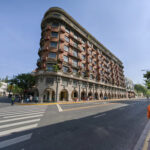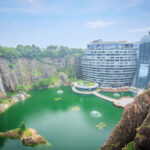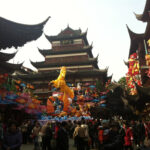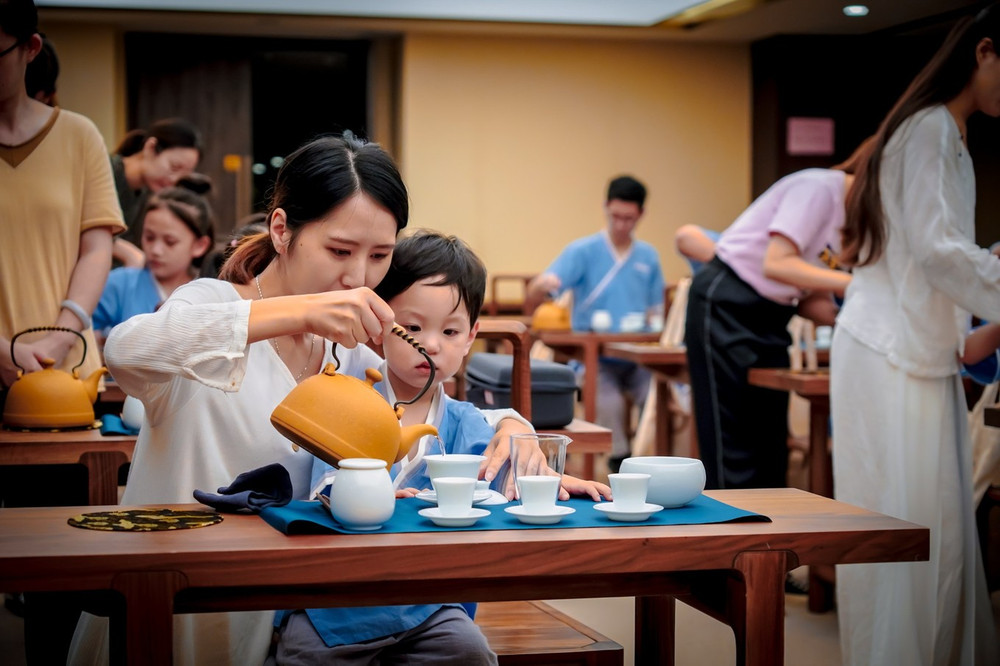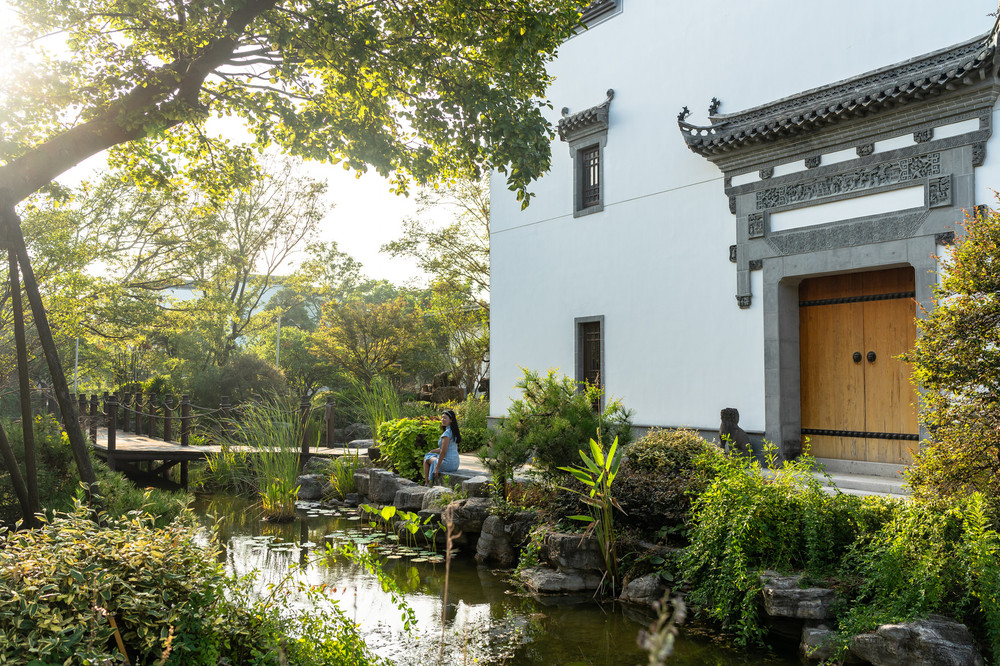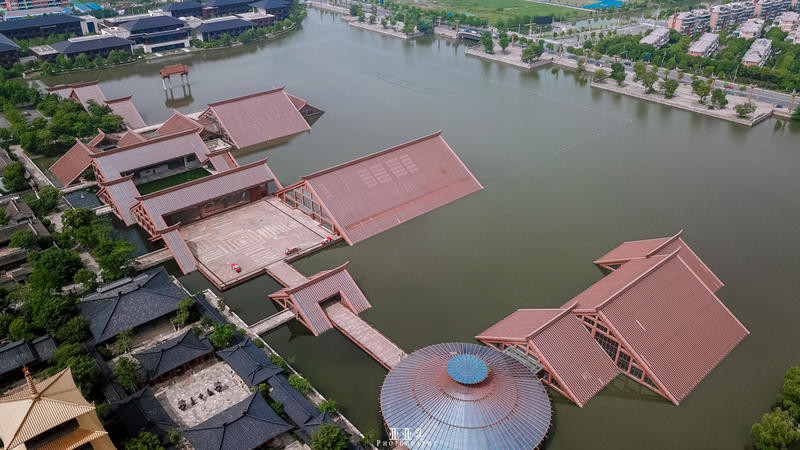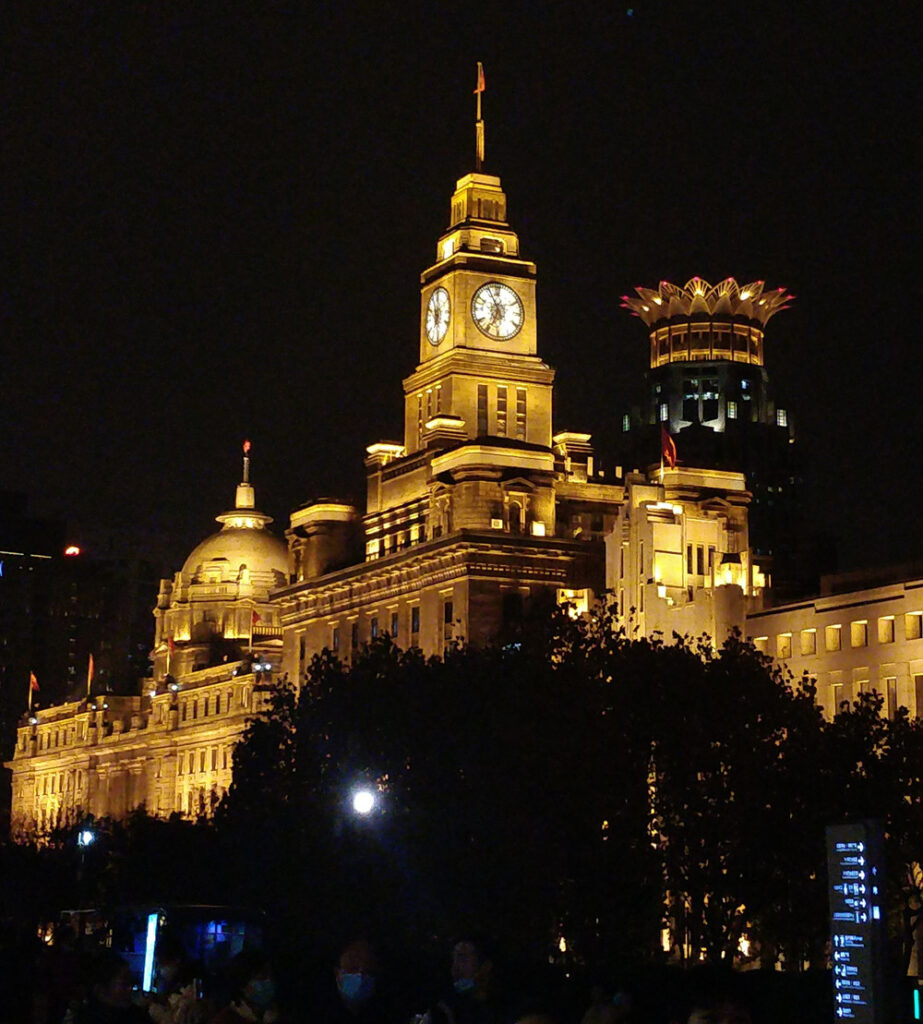**Yangpu Riverside: A Journey Through Time and Transformation**
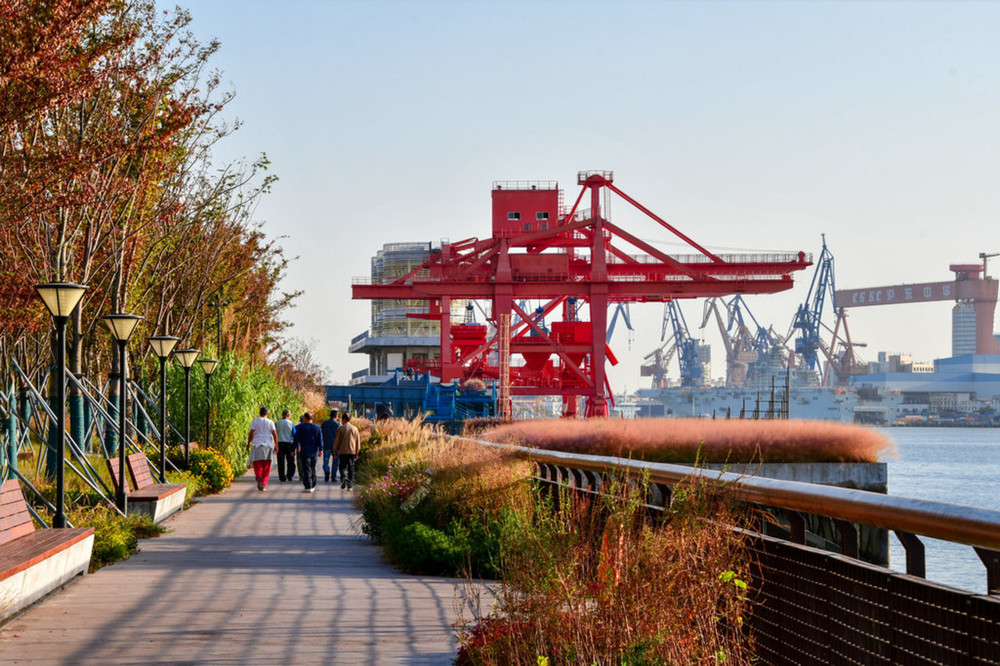
**Duration:** 1 day
**Time:** October
**Per Capita Cost:** 100 yuan
**With Whom:** Spouse
**Ways to Play:** Photography, Independent Travel
**Our Visited Places:**
Shanghai Chongming Island, Hengsha Island, Fisherman’s Wharf, Jardine Matheson, Zigzag Bridge, Covered Bridge
**Posted on:** December 31, 2020, 16:46
**Shanghai: The Birthplace of Modern Industry in China**
Shanghai is recognized as the birthplace of modern industry in China, with Yangshupu being its cradle. Located downstream of the Huangpu River, it boasts a strategic position with a multitude of tidal flats sold at low prices, connected to the central area of the concession, and offering convenient transportation. Between 1902 and 1937, foreign businessmen flocked to establish factories along Yangshupu Road. This area housed 17 textile factories and 4 metallurgical factories operated by Japanese businessmen such as Yufeng, Dacang, and Gongda; 3 shipyards including Maersk by British businessmen, and 6 textile factories like Jardine Matheson, along with 14 light industry factories such as China Soap Company and 2 like Shanghai Gas Works. American and German businessmen also set up 10 factories. The Yangpu riverside coastline spans approximately 15.5 kilometers.
**Yangpu Riverside: From Factory Coastline to Living Landscape**
In October 2017, about 2.8 kilometers of the coastline from west of Yangpu Bridge to Qinhuangdao Road Wharf was opened. On September 28, 2019, an additional 2.7 kilometers of public space east of the south section of Yangpu Riverside Bridge was opened to the public. This marks the opening of the entire 5.5 kilometers of the south section of Yangpu Riverside. Developments include pedestrian, running, and cycling paths, alongside the industrial heritage exhibition belt and the original landscape experience belt, creating a world-class waterfront space. Yangpu Riverside is transitioning from a production coastline dominated by factories and warehouses to a living, ecological, and landscape coastline dominated by parks and green spaces. The former industrial rust belt has become a living show belt.
**Our Tour: From Yangshupu Power Plant to the Ruins Park**
We entered from Pingding Road and started our tour from the ruins of Yangshupu Power Plant, moving from east to west along the 5.5 kilometers of the riverside area, covering more than 4 kilometers on foot. The two-hundred-meter chimneys (100.65 meters and 89.5 meters) have become symbols of Yangpu Riverside, once seen as signs of entering Shanghai and remaining in the memories of several generations of Shanghai people. They are also witnesses to the formation of Shanghai’s urban spirit of inclusivity. Now, two chimneys and two main workshops of the original power plant are retained.
**Yangshupu Power Plant: A Historical Powerhouse**
Yangshupu Power Plant was invested and constructed by British businessmen in 1913, initially with an installed capacity of 10,400 kilowatts. By 1924, it reached 121,000 kilowatts, becoming the largest power plant in the Far East at that time. At the time of Shanghai’s liberation, Yangshupu Power Plant’s power generation accounted for 10.7% of the national power generation and supplied nearly 80% of the electricity in Shanghai. It earned the reputation of being the cradle of China’s power industry. In 1985, the total installed capacity reached 264,150 kilowatts. In line with national requirements for ‘building large-scale power plants and reducing small ones, and saving energy and reducing emissions’, the plant was shut down at the end of December 2010.
**The Ruins Park: A New Resting Place for Citizens**
Now, a power plant ruins park has been established, centered on the coal transportation plank road along the river. To reveal the positioning of the two transfer buildings close to the riverbank in the coal transportation trestle in the technological process, foundation pits are continuously excavated under the demolished buildings to form three ponds for the growth of aquatic plants, constituting the basic landscape framework system of the ruins square and combining with the surrounding area to become a new place for citizens to rest.
The Ruins Park has preserved an entire coal transportation plank road and the towering chimneys of the power plant, which were once seen as symbols of entering Shanghai and are now part of the memories of generations of Shanghai residents, bearing witness to the formation of Shanghai’s inclusive urban spirit. The exterior walls of the factory buildings, with exposed steel structures and mottled walls covered in rust, present the essence of the ‘century-old rust belt, industrial context’. The former NoLooking west from the power plant station, the distant view includes the Yangpu Bridge, while closer at hand is the power plant ruins park. On the east side of the power plant station, the power plant ruins park is integrated with modern architecture. The rest area of the industrial age is roofed with an arrangement of eighteen ‘shell-like’ cylindrical buildings, resembling a blooming cornflower when viewed from above. The former pipelines stand upright like rocket launch tubes along the riverbank, and the two tall cranes of the power plant still stand tall. Under the creative influence of the renowned Swiss artist Felice Varini, the heavy cranes have gained an incredible sense of movement. The collision of red and blue makes the cranes along the Yangpu Binjiang particularly eye-catching, with the orange-red cranes painted with white stripes, creating a strong contrast with the blue steel staircase, adding more vibrant and intense colors to the riverside. Among them, three are works by French artist Felis Varini titled ‘Diagonals of Cranes’, spanning three cranes. In what appears to be ‘broken’ shapes and lines, these straight lines only become coherent when viewed from a unique point, offering a sudden enlightenment. Varini’s ‘Diagonals of Cranes’ is also located on the riverbank, ‘crossing’ a set of three orange-yellow cranes. However, many people first notice only the white lines on the cranes, not even realizing it is a public art piece. It is only when one finds a specific viewpoint (which varies subtly with the observer’s height) that the three-dimensional cranes, due to the ‘diagonals’ in the artist’s hand, are transformed into a two-dimensional space.
The exploration-filled Grey Warehouse Art Space, originally three dry ash storage silos of the power plant along the river, has been connected into a unified whole by adding two landscape platforms. The original 15-meter high enclosed ash silos were transformed using a hazy interface treatment technique. The entire space is imagined as a fully public wandering path, starting from the concrete frame at the bottom and winding up to the top of the ash silo.
‘Huangpu Cargo Hold’ was created by British artist Richard Wilson, who took 42 parts from an abandoned shipwreck and installed them at both ends of 21 stacked steel pipes. Initially, the artist planned to create a work based on the waterline of the ship’s hull, but after searching in places like Chongming Island and Hengsha Island and not finding a suitable ship, he finally settled on an abandoned ship that had been docked at the Shanghai Shipyard for a long time. This abandoned ship was designed and manufactured by the staff of the Shanghai Shipyard in 1975 and was decommissioned in 2005 when the Shanghai Shipyard moved to Chongming District. The rust on the ship and the vintage ship parts captivated Wilson. Forty-two pieces, either round or oval, were cut from the ship, infusing new life into what was once industrial wreckage, continuing to connect with the Shanghai Shipyard, which it has belonged to in the past, present, and future. Wilson presents ships with ships and tells history with history. In his view, this is also one of the duties of artists: ‘To reveal the world that ordinary people cannot see, not forcing the public to accept anything, but simply telling them that such existence exists.’ He introduced this work in an interview in this way. In the opinion of the Chinese personnel who liaised with Wilson, the artist’s choice to use discarded ships from the Huangpu River and materials like pipelines, originally a medium of transportation, to complete the work, seems to resonate subtly with the power plant behind the work. He is accustomed to changing the original content of objects or the relationships between objects, stripping people’s perception of the reality they are used to with a grand narrative scheme. Presenting ships with ships and recognizing history with history.
The greenery here is particularly beautiful, with the colorful leaves of the Chinese arborvitae and the pine needles of the fruit pine, adjusted onto the flowering reeds, white, red, green, beautiful or not, the wolf tail grass against the light, the powdery seeds of the reed flowers, and the wandering: Author: Shen Lieyi, The empty chair, like a fading memory, comes with the moonlight, leaving traces on the mirror-like river surface; if someone sits here facing each other, they are not only encountering a part of cultural experience but also meeting themselves and others, and the river will carry all this and flow forever.
‘Light Boat Passing Through the Gap’ is a boat-shaped architectural sculpture that ‘ferries’ in mid-air, forming a contrast between motion and stillness, virtuality and reality with the busy Huangpu River surface. The upper half of the work, the ‘boat house,’ presents a space of contemporary architectural structure, hoping that the audience can reminisce and imagine the buildings on theThe middle of the work runs through the ‘arrow of time,’ using the winding form of the Huangpu River as a blueprint, symbolizing an abstract timeline that connects and narrates the past, the present, and the future. Author: Xiang Yang.
The dogtail grass and powdery seeds of the reed grass, this section was originally the site of the 12th Cotton Mill. The 12th Cotton Mill mainly produced khaki cloth and was known as the ‘Khaki King.’ Khaki is the color of the earth, the color of the yellow land. Naming the children’s playground with ‘Khaki’ and using the basic color of earth yellow and red ‘weaves’ history and the brilliance of children.
Going further forward, at the former gas factory dock, you will find a ‘side garden’ transformed based on the ruins of the remaining walls, with a light and clever conception, a feeling of using a small force to move a great weight.
Continuing westward, you will pass by the cage basketball court and the sand volleyball court. Although the season is not right, facing the white sand, you can still imagine the vitality of the wheat-skinned sand volleyball players. At this time, you may be a bit tired, but look up, the key Yangpu Bridge is ahead. The river water on the right side slaps the case and sends the river breeze, and the industrial heritage buildings on the left side are gradually being given new life. There are also some artist works in this section.
Further forward, there is a Baiqi Café, operating hours: every day 10:00-20:00. Baiqi added together is ‘soap,’ and smart friends must have guessed that this is related to the history of the soap factory.
The former Shanghai Soap Factory, with its spatial layout and artistic landscapes, catches our eye. The Soap Dream Space: The advertisements on the walls display various soaps made in Shanghai, reminding us of the memories that have passed by. This exhibition and experience hall, transformed from the original Shanghai Soap Factory’s production support area, is located south of the Huangpu River and consists of land-based landscapes and waterfront docks. We visited on a Monday and found it closed, thus unable to enter. The western part of the land area was originally the production and support area. The design takes the original wall foundation as a clue, constructing red brick low walls to restore the historical spatial layout, forming a semi-open courtyard; at the same time, a floating steel plank road connects various places, achieving the effect of changing scenes with every step. The eastern part is composed of the original production workshop’s pressure hydrolysis building and sewage purification pool (regulating pool, grid pool, biological disc pool, air flotation pool, sodium hypochlorite pool, observation building). Various flowers and plants are arranged in the middle, colorful and like a beautiful small garden. Artists use the concept of ‘bonsai’ and the surrounding environment, history, and humanities to jointly construct a contemporary park ‘Ruo Chong Garden’. The name of the work comes from ‘Da Ying Ruo Chong, its use is endless’ in the Tao Te Ching. Collected old door frames, everyday objects, and waste, thousands of lights, and slightly curved mirror plates constitute a ‘neo-realistic’ landscape system. These seemingly mountain and river, architecture, goods, and ship elements of bonsai structures originate from old door frame fragments. Like pieces of ‘void’ magnets, they attract and map the surrounding scenery and life. This is a bridge, built in life, reality, and art, connecting each other with the concept of ‘boundlessness’. This is also a ‘living’ work. Many of the objects with life marks come from the surrounding communities and will continue to be added in the future. It is also a garden space that can be used in various ways, where various cultural lives can take place. It is a platform that presents continuous creativity. Old door frames, steel, glass, colored mirror plates, concrete, broken tiles, collected lights, residents’ everyday objects, old objects and waste from the original factory, etc.
Here is the site of the original National Cotton Mill No. 9 and No. 10, but we cannot know the boundary between the two factories. It is also the later ‘Xin Yi Mian’. Scan the QR code provided by the riverside to read carefully and understand the historical changes. Here, the leaves of the Chinese arborvitae tree turn red. The earliest trace of National Cotton Mill No. 9 can be traced back to the Da Chun Spinning Mill founded by Sheng Xuanhuai. In 1908, the Japanese Mitsui Trading House acquired the Da Chun Spinning Mill and others, established the Shanghai Textile Corporation, and set up a workshop on Yangshupu Road. In August 1945, the Nationalist government took over the factory and renamed it the Fourteenth Textile FactoryIn October 1958, the Ninth Cotton and the adjacent Tenth Cotton merged into the new state-owned Shanghai Ninth Cotton Textile Factory. The new Shanghai Cotton Mill No. 9 became a large factory with nearly ten thousand employees. The basic shape of the house is still there, but it is dilapidated. The river-facing wall is covered with ivy, lush and luxuriant. The warehouse, surrounded by soft purple grass, marks the garden as the original site of the National Cotton Mill No. 9 along the river. Through historical research and reproduction, the factory area’s texture and spatial layout are restored, retaining two existing factory buildings with unique historical style, and selecting characteristic warehouses, workshops, and other room sites within the original factory area, transforming them into thematic mark gardens and other attractions with a contemporary experience atmosphere.
Imprint Garden is meticulously designed following the contours of the original factory warehouse ruins, either by the riverside or embedded in green spaces. Within the Farm Bureau Dock Hill, there stands an industrial-style building named ‘Wei Pavilion’. Formerly a guardhouse for shipping logistics, it has now been transformed into a place for tourists to rest. Not far from it is a similar-sized building called ‘Zhi Pavilion’, which was originally an environmental logistics duty room and has been turned into a public space. However, unlike ‘Wei Pavilion’, ‘Zhi Pavilion’ houses a public art piece titled ‘Mountain’.
The Shanghai Power Plant Auxiliary Machine Factory, which was originally the American Shengchang Trading Company’s Yangshupu Workshop, was first established in 1921. The founder of the Chinese branch of Shengchang Trading Company was the Danish Ma Yier. In the west factory, a hyperbolic arched roof without beams has left a timestamp from around 1960. At that time, facing natural disasters and resource scarcity, to save on raw materials, the East China Architectural Design and Research Institute used a ‘beamless’ design for the Yangshupu Road 1900 address, which was originally a workshop in the west factory of the power plant auxiliary machine factory. The steel roof frame of the original workshop building was fully preserved, making it a transparent landscape structure. This is now the Bridge Park Station.
‘Green Hill’ is created from the transformation of the original tobacco warehouse. The tobacco warehouse was massive, occupying a 60-meter wide and 250-meter long strip along the river, not only visually blocking the connection between the city and the riverfront but also obstructing the passage of new roads planned for this area. The fate of the old warehouse seemed to be inevitable demolition. However, the designer, by weighing the pros and cons of the original tobacco warehouse’s demolition, attempting land compounding, and coordinating the relationship between the riverfront open space and the urban hinterland, achieved an inclusive complex that integrates municipal transportation, park green space, and public services. It is not only a must-visit spot for photography enthusiasts but also attracts visitors with its unique circular atrium and spiral staircase design. Yangpu Riverfront’s ‘Green Hill’ has become an internet-famous landmark. Climbing up the open stairs leads to Green Hill. The exposed reinforced concrete frame retracts layer by layer from the second floor, forming a cascading terrace. A spiral staircase is built in the center, connecting the exhibition halls on each floor, leading to the rooftop garden. From the rooftop garden, one can overlook the Yangpu Bridge and the surrounding scenery.
The ‘Fisherman’s Wharf’, which has been closed due to the pandemic, should be visited once reopened. It will span about 700 meters along the Yangpu Riverfront. The construction of ‘Fisherman’s Wharf’, while maximizing the viewing of the river scenery, adds a new bright spot to the scenic spots on both sides of the Pu River. It will be meticulously created as a landmark urban waterfront and historical district in Shanghai, becoming a new pearl on both sides of the Pu River and setting a good example and radiating effect for the construction of the more than ten kilometers of the Huangpu River waterfront in Yangpu District. ‘Fisherman’s Wharf’ is a symbol of Yangpu Riverfront’s rise.
Aisiter Stoke’s work ‘Block Universe’ uses the outdoor porch of the building as a canvas, allowing the work to be traversed. The combination of black blocks and white arcade structures makes one feel like entering a black and white geometric world.
Gantry crane dock: Designers use the preserved industrial facilities to form a dock landscape. The work “Wild in the City” by artist Yusuke Asai has also become a unique scenery along the riverside. The work “Wild in the City” by Japanese artist Yusuke Asai is a large-scale work “dyed” on the ground. The artist first draws various images such as plants and animals on adhesive tape with marker pens, and then uses the white line material similar to that used for drawing zebra crossings to engraFrom a bird’s-eye view of the artwork painted along the Yangpu Riverside, one can discern two massive animals. However, when viewed from a human perspective, these animals are composed of intricate details such as small flowers, trees, birds, and reptiles, all of which are like minuscule yet significant beings that make up the natural world. This piece serves as a commentary on the coexistence of nature within the urban environment. Yusuke Asai dedicated over a month to this riverside project in Shanghai during the summer. Unlike his independent works, “Wild in the City” stands out for its high level of public engagement. The riverside area, where the artwork is located, was open to the public during its creation, allowing local residents to participate as they strolled with their children. They would sketch patterns on paper, which the artist would then incorporate into his design, placing them in various spots. According to Wang Bin, many of these residents left their marks and took pride in pointing out their contributions to friends. They might never have imagined that they would become part of an artist’s creation, one that would remain a permanent fixture in their neighborhood.
The Pujiang Yuese Panoramic Restaurant, situated on the fourth floor of the Oriental Fisherman’s Wharf, offers a view of the Huangpu River. From its balcony, one can gaze upon both the restaurant by the riverside and the Huangpu River itself. In the distance, the Minsheng Wharf on the east bank of the Huangpu River, with a history spanning over a century, stands out. The colossal structure within it, the 80,000-ton silo, once bore the illustrious title of “the largest bulk grain silo in Asia.” Today, it is a protected cultural relic and a significant industrial heritage site in Shanghai. The 80,000-ton silo art center, with its 30 large cylinders forming a continuous facade that is 140 meters long and 48 meters high, presents a stark contrast to the modern vibe of Shanghai. The old and solitary storage warehouse now stands quietly by the river, its former glory replaced by a sense of historical depth and change.
The 80,000-ton silo, constructed in 1995 and designed by the Shanghai Civil Design Institute, is part of the 80,000-ton silo art center. It stands alongside a connected 40,000-ton silo, both of which were crucial for storing goods essential to the lives of Shanghai’s citizens, namely rice and sugar. (The 40,000-ton silo was built in 1975). Nearby, at No. 1056 Yangshupu Road, stands the British New Jardine Textile Mill, established in 1915 by Jardine Matheson. It was the first textile mill in Shanghai founded by foreigners after the city’s opening and later became known as Shanghai No.1 Woollen Yarn Mill. Adjacent to Rainwater Park, a small western-style building from 1918, a two-story brick-wood structure in the British country style, once served as the residence of the manager of the Yangshupu Textile Mill and the British boss. This nearly century-old building has witnessed the rise and fall of Yangpu’s century-old industry. At the site of the former Jardine Textile Mill, few traces of the factory buildings remain, with only low walls and a group of large spinning landscape sculptures hinting at its past.
On the inner side of the riverside plank road, a gentle slope leads down to a depression holding a pond. A ‘Nine-Turn Bridge’ made of steel pipes and mesh panels winds across the water. By the pond, towering metasequoias stand tall, with a three-story villa nestled behind them amidst the shade of large camphor trees and dense bamboo groves. Sponge city, wetland parks, and the construction of a green lung with reed pools and metasequoia paths create an enchanting scene. Liu Jianhua’s sculpture ‘Celestial Object’, made of stainless steel with a paint finish and laser lights, stands tall on the earth and is often referred to as the ‘Sea-Stabilizing Needle’. The 8-meter-high ‘Celestial Object’ is a textile corridor bridge on Yangshupu Road leading to No. 830 Yangshupu Road, home to China’s first modern water plant, the Yangshupu Water Plant. Established in 1883, it is the oldest and largest water plant in Shanghai. The plant’s British classical castle-style architecture is a fine example of modern architectural heritage in the city. In 1880, British merchants in London established the Shanghai Waterworks Company, and the following year, they built a water plant by the Huangpu River. Located at No. 830 Yangshupu Road and designed by British designer Hart, construction began in August 1881 and was completed two years later.On June 29, 1883, Li Hongzhang, Minister of Commerce for the Beiyang government, officially marked the completion of China’s first modern water plant by opening the water gate. The Yangshupu Water Plant, covering an area of 129,000 square meters, stands as one of the earliest and largest ground water plants in the national water supply industry. Its exterior, reminiscent of a traditional British castle, features load-bearing walls made of clear water bricks, accented by red brick belts, and surrounded by walls with crenelated parapets. The parapets’ caps, window frames, and belt lines are outlined with cement to create a convex line, and the wall intersections are shaped like cement corner stones, giving it a medieval British castle appearance.
In the 1930s, the water plant expanded, tripling its area to become the largest in the Far East. The total area of various buildings within the plant reached 12,800 square meters, with brick-concrete structures facing different directions. These buildings are well-preserved and were listed as a national key cultural relics protection unit in 2013. After more than a century, the Yangshupu Water Plant continues to supply water to Shanghai’s citizens, with an annual water supply exceeding 400 million cubic meters, accounting for about one-fourth of Shanghai’s total water supply.
Visitors can walk on a 550-meter-long plank bridge over the Huangpu River to get up close to these century-old buildings and appreciate their charm and spirit. The ‘box pavilion framing the scene’ on the plank road features a steel structure that folds to form a box-shaped pavilion, serving as a shading point on the bridge. From one side, the riverside scenery is framed, much like a camera’s ‘viewfinder’. Walking on the plank road feels like traversing a deck, allowing one to simultaneously experience the scenery of the Huangpu River and the historical charm of the water plant.
The water plant’s iconic building is the water tower. The main entrance of the water plant on Yangshupu Road now houses a newly built Water Technology Museum, which is open every Tuesday. The Yangshupu Water Plant is distinctive in its architectural features and well-preserved, a rarity in China. On the ground are inscribed the past lives of the怡和 spinning mills, both once operated by the British firm Jardine Matheson.
The first, at No. 1056 Yangshupu Road, near Huai De Road, is the former site of the Xinyihe Spinning Mill (also known as Yangshupu Spinning Mill or ‘Shanghai’s First Woolen Mill’), originally established by Jardine Matheson in 1915 with an investment of 1.5 million taels of silver to create the ‘British Xinyihe Spinning Mill’. The other is the Yihe Spinning Mill at No. 670 Yangshupu Road (later known as the Wu Mao Factory), which is the earliest foreign-invested factory in Shanghai, built by Jardine Matheson in 1896.
The construction covers an area of 12,700 square meters, with a building area of 22,400 square meters. It mainly consists of factories, air compressor stations, and warehouses, waste spinning workshops, and residential quarters for senior staff. The factory of the Jardine Spinning Mill is a brick structure with corrugated iron sawtooth roofs, composed of three spans of gable roofs. The warehouse is a reinforced concrete structure with a sawtooth roof and a facade with a series of long vertical windows.
Founded in 1896 by Jardine Matheson, it is one of Shanghai’s earliest foreign-invested factories, and the ‘Lan Long brand’ cotton yarn produced by the factory was quite reputable at the time. After the British merchants built the Jardine Spinning Mill, they subsequently established the Yangshupu Spinning Mill and the Public Welfare Spinning Mill. In 1921, the three factories merged into the Jardine Textile Company, which was later renamed Shanghai Yuhua Cotton Wool and Linen Textile Factory, and in 1964 it became Shanghai’s Fifth Wool Textile Factory. With a history of 100 years, around 1996, this once largest wool textile factory in the country went bankrupt. Around 2002, the spinning mill was officially registered as immovable cultural heritage in Yangpu District.
Shanghai Shipyard has arrived at its territory, where large ships once entered the shipyard for repairs, and new ships were launched from here. The sleepers that were crushed by the large ships during launching were preserved and became a display of historical relics. The Old Shipyard Plaza at Shanghai Shipyard Riverside Green Space is a wonderful scene that brings industrial heritage to life, with a ship’s bow sailing high as if striving to sail into the distance. Shanghai Shipyard Riverside Green Space is located at Yangshupu Road No. 540. Runners Station, a coffee shopThe glass on the table at Shanghai Shipyard Riverside Green Space can capture the sky’s reflection on a good day. Here, you can see a red-brick building, which is the Wool and Linen Warehouse. The warehouse was originally built in 1920 by the German merchant house of Rickmers, and later became Shanghai’s first silk weaving factory. It was the leading enterprise in the production of silk and artificial silk at the time and was transferred to Shanghai Shipyard in 2003. This nearly century-old building on the banks of the Huangpu River has witnessed countless ups and downs and is currently the largest beamless warehouse in the Yangpu Riverfront area, also a testament to the vigorous development of Shanghai’s national industry. The Wool and Linen Warehouse, now an exhibition hall, has closed its doors to visitors as the exhibition has ended and the pandemic has not yet subsided.
Next to the Wool and Linen Warehouse is the former site of Ruirong Shipyard. The building has been used by Wanlong Ironworks, Ruirong Shipyard, British Alliance Shipyard, and Shanghai Shipyard Repair Branch, witnessing the development and changes of Shanghai’s ship repair and shipbuilding industry over the past century.
The shipyard at Shanghai Shipyard Riverside Green Space is one of the oldest shipyards in Shanghai. The shipyard was excavated by the German-funded Ruirong Shipyard in 1900, merged with Xiangsheng Shipyard and Yesong Shipyard in 1936 to become the British Alliance Shipyard, which was the shipyard with the most shipyards in China at the time. In 1954, it was incorporated into Shanghai Ship Repair and Construction Factory and renamed Shanghai Shipyard in 1985.
On November 6, 2007, China’s only third-generation polar ice-breaking scientific research vessel ‘Xuelong’ was delivered and left the factory after being upgraded. Now, the more than 200-meter-long dock in the riverside green space of Shanghai Shipyard is presented in front of people. The mottled rust full of industrial atmosphere still shows no less tension in the afterglow of the setting sun, which is very shocking. In the riverside green space of Shanghai Shipyard, among the sealed memory works of the riverside green space of Shanghai Shipyard, between the changes of light and shadow, it seems that one can still hear the ships of those years sailing from here to the Huangpu River, blowing whistles and pushing away the rolling waves.
When it comes to the century-old factory, Tianzhang Recording Paper Mill must be mentioned! I have worked in this century-old factory for a long time. The predecessor of Shanghai Tianzhang Recording Paper Mill at 408 Yangshupu Road. The Yangshupu industrial belt started in 1882, the eighth year of Guangxu in the Qing Dynasty. Li Hongzhang approved the establishment of the Shanghai Machine Paper Making Bureau under the official supervision and merchant management. In 1882, Cao Zihui, Cao Zijun, Zheng Guanying and others raised 155,700 taels of silver. With the intention of establishing a Chinese machine paper-making enterprise, they submitted the plan to Li Hongzhang, the Beiyang minister. After approval, they chose to build a factory at 408 Yangshupu Road, Shanghai, which is the Shanghai Machine Paper Making Bureau, the first paper-making enterprise established by Chinese businessmen. The main equipment of this enterprise is a multi-cylinder fourdrinier paper machine with eight drying cylinders. It was produced by Leicester City, Erm Footstone Company in the United Kingdom in 1877. In 1915, Liu Bosen rented this factory and then bought more Baoyuan Paper Mill. In 1920, he bought Huazhang Paper Mill from Mitsubishi Company of Japan for 820,000 taels and named it the east factory of Baoyuan Paper Mill. The original factory on Yangshupu Road is the west factory of Baoyuan Paper Mill. In 1925, it was renamed Tianzhang Paper Mill Co., Ltd. In 1983, his son Liu Mengjing cooperated with the Japanese and once renamed it ‘Tianzhang Changji Paper Mill’. In 1947, the Kuomintang government redeemed this factory. After liberation, it was nationalized and named Tianzhang Paper Mill. In 1981, Tianzhang Paper Mill merged with Shanghai Recording Paper Mill and was officially listed as Tianzhang Recording Paper Mill. Tianzhang Recording Paper Mill is the first and largest manufacturer of instrument recording paper and electronic printing paper in the country. There is also a Tianzhang Road named after Tianzhang Factory in Yangpu Riverside.
The construction site staff told us that the factory building will be demolished soon. Take one more look! Yuan Feng’s ‘Project



